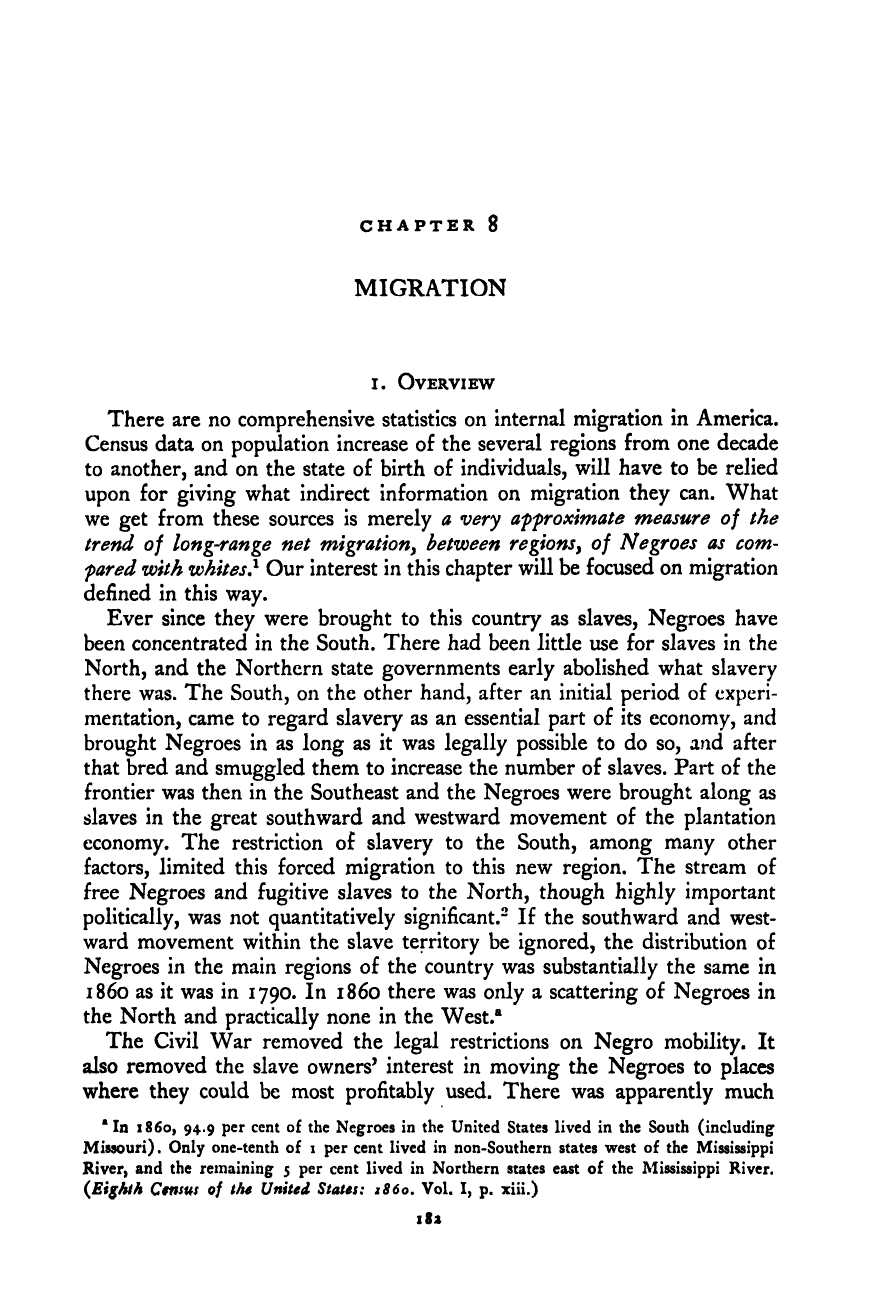Note: Gunnar Myrdal died in 1987, less than 70 years ago. Therefore, this work is protected by copyright, restricting your legal rights to reproduce it. However, you are welcome to view it on screen, as you do now. Read more about copyright.
Full resolution (TIFF) - On this page / på denna sida - III. Population and Migration - 8. Migration - 1. Overview

<< prev. page << föreg. sida << >> nästa sida >> next page >>
Below is the raw OCR text
from the above scanned image.
Do you see an error? Proofread the page now!
Här nedan syns maskintolkade texten från faksimilbilden ovan.
Ser du något fel? Korrekturläs sidan nu!
This page has never been proofread. / Denna sida har aldrig korrekturlästs.
CHAPTER 8
MIGRATION
I. Overview
There are no comprehensive statistics on internal migration in America.
Census data on population increase of the several regions from one decade
to another, and on the state of birth of individuals, will have to be relied
upon for giving what indirect Information on migration they can. What
we get from these sources is merely a very affroximata measure of the
trend of long-range net migration^ between regions^ of Negroes as corn-
fared with whites} Our Interest in this chapter will be focused on migration
defined In this way.
Ever since they were brought to this country as slaves, Negroes have
been concentrated in the South. There had been little use for slaves in the
North, and the Northern state governments early abolished what slavery
there was. The South, on the other hand, after an initial period of experi-
mentation, came to regard slavery as an essential part of its economy, and
brought Negroes in as long as it was legally possible to do so, and after
that bred and smuggled them to increase the number of slaves. Part of the
frontier was then in the Southeast and the Negroes were brought along as
slaves in the great southward and westward movement of the plantation
economy. The restriction of slavery to the South, among many other
factors, limited this forced migration to this new region. The stream of
free Negroes and fugitive slaves to the North, though highly important
politically, was not quantitatively significant.^ If the southward and west-
ward movement within the slave territory be ignored, the distribution of
Negroes in the main regions of the country was substantially the same in
i860 as it was in 1790. In i860 there was only a scattering of Negroes in
the North and practically none in the West.®
The Civil War removed the legal restrictions on Negro mobility. It
also removed the slave owners’ interest in moving the Negroes to places
where they could be most profitably used. There was apparently much
* In i860, 94.9 per cent of the Negroes in the United States lived in the South (including
Missouri). Only one-tenth of 1 per cent lived in non-Southern states west of the Mississippi
River, and the remaining 5 per cent lived in Northern states east of the Mississippi River.
{Eighth Census of the United States: 2860, Vol. I, p. xiii.)
181
<< prev. page << föreg. sida << >> nästa sida >> next page >>